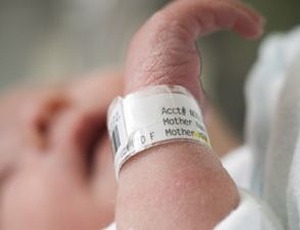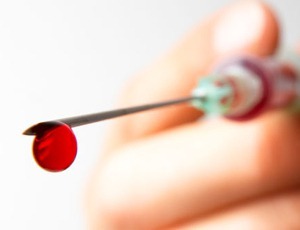Endocarditis in a patient with anterior chest wall tunneled catheter

“Suspicion for these infections should be particularly high in patients with chronic indwelling central venous catheters, and most notably, in patients with hemodialysis catheters” Oluyadi teal (2020).
Septic arthritis of wrist due to colonization of central venous catheter

“After a protracted interval P. aeruginosa was detected by microbial culture from the explanted port and the affected joint” Thibeault et al (2020).
Testing antibiotic compatibility when using a Y-site for administration

“The objective of this communication was to determine the intravenous compatibility of ceftazidime/avibactam and aztreonam using simulated and actual Y-site administration” O’Donnell et al (2020).
Role of diuretic infusion clinic in preventing hospitalization of heart failure patients

“This study aims to evaluate the effect of outpatient furosemide infusion protocol in preventing hospitalization for patients with decompensating heart failure” Alghalayini (2020).
Management of suspected central line-associated bloodstream infections

“To assess whether a 24-hour length of hospitalization and empiric antibiotic therapy to exclude central line-associated bloodstream infection (CLABSI) in children with intestinal failure is potentially as safe as 48 hours, which is the duration most commonly used but not evidence based” Fell et al (2020).
Impact of non-tourniquet technique for peripheral IV catheterization

“This pilot study aimed to determine the initial efficacy of non-tourniquet procedure during insertion of PIVC in older patients” Büyükyılmaz et al (2020).
CVAD insertion side and CLABSI rates in adult patients with cancer?

“We performed a prospective randomised controlled, non-blinded study to determine whether the side of CVAD insertion influenced the incidence of CA-BSI” Mollee et al (2020).
Guide-wire replacement of midline catheter with central venous catheter

“We retrospectively evaluated data from 63 patients where a previously inserted mini-midline catheter was upgraded to a central venous catheter” Brugioni et al (2020).
Repurposing the power injectable PICC as tunnelled central venous access

“In this pilot study, we have evaluated the off-label use of peripherally inserted central catheters as a tunnelled supraclavicular centrally inserted central catheter” Low et al (2020).
Risk factors for peripheral IV catheter failure during cancer treatment

“To identify modifiable and non-modifiable risk factors for peripheral intravenous catheter (PIV) failure among patients requiring intravenous treatment for oncology and haematology conditions” Larsen et al (2020).
Tibial intraosseous access in the pediatric population

“Aim of this study was to analyze anatomic dimensions of the proximal tibia in the pediatric population with respect to intraosseous needle placement and needle tip position” Capobianco et al (2020).
CLABSI rates associated with jugular and subclavian catheter placement

“CVC placed in the IJV were associated with significantly less catheter-related infectious events compared with CVC placed in the SCV” Rixecker et al (2020)
Aberrant central venous catheter placement

“During placement of a central venous catheter into the right subclavian vein it was found to be impossible to extract the guidewire” Pacheco et al (2020).
Bedside rescue method for retrieving retained central line guidewires

“The ‘suck out’ technique can effectively retract guidewires retained within central venous catheter lumens” Mariyaselvam et al (2020).
Midline catheter failure and the role of the infusate

“Infusate osmolarity, pH, and cytotoxicity were investigated as risk factors for midline catheter failure” Ryder et al (2020).
Prevalence of factors associated with difficult peripheral IV access

“History of difficult intravenous access and a nonvisible venous network were significant predictors of peripheral cannula insertion failure in adults undergoing clinical surgery. The prevalence of difficult intravenous access was 32.8%” Dat et al (2020).
Dressing and securement methods to prevent arterial catheter failure

“Arterial catheter failure remains unacceptably common; further research to determine optimal dressing/securement practices is urgently needed” Larsen et al (2020).
The role of school nurses in central venous catheter care

“An example of a common medical device includes central venous access devices that allow for access to the bloodstream to obtain blood for laboratory testing or to infuse medications or nutrition” Farou et al (2020).
Bactericidal and antiproliferative effects of parenteral nutrition solutions – Full Text

“Catheter-related bloodstream infections (CRBSIs) due to pathogenic microorganisms pose a major threat to patients requiring parenteral nutrition (PN). Additives contained in medicines and foods have antiproliferative and bacteriostatic effects on pathogenic microorganisms” Ohara et al (2020).
Care bundles and regular feedback reduce central line-associated complications

“Reinforcing CVAD care bundles with direct feedback could significantly decrease CVAD-associated complications in terms of infection at 6 months post-intervention, and occlusion at 3 and 6 months post-intervention” Chaiyakulsil et al (2020).
Shallow-angle needle guide for ultrasound-guided vascular access – Full Text

“Use of a shallow angle of approach needle guide resulted in a lower rate of posterior vein injuries during venipuncture of a simulated vein” Watanabe et al (2020).
Peripherally inserted central catheter malposition to a persistent left superior vena cava

“Persistent left superior vena cava is rare and asymptomatic and is usually discovered incidentally during or after insertion of a central venous catheter” Li et al (2020).
Recommendations for core critical care ultrasound competencies – Full Text
“The resulting recommendations offer the most contemporary and evolved set of core CCUS competencies for an intensive care clinician yet described” Wong et al (2020).
Impact of hospital acquired infections on pediatric bone marrow transplant patients

“Adjusted analysis revealed CLABSI and respiratory adenovirus infection independently increased mortality risk by 3-fold” Hanisch et al (2020).
Guidelines for the management of extravasation

“The purpose of these practice guidelines is to offer and share strategies for preventing extravasation from occurring and measures for handling drugs known to cause tissue necrosis” Kim et al (2020).
Patient experience of OPAT services – Full Text

“Less frequent antibiotic dosing and better social support were associated with improved adherence to OPAT” Hamad et al (2020).
Preventing falls in outpatient oncology infusion center

“Patients with cancer are highly susceptible to falls because of the neurologic deficits caused by chemotherapy treatments” Shah et al (2020).
Risk factors for HIV transmission among medical students

“It is important to more actively popularize HIV testing in students, explain risk factors of HIV transmission, and to a organize needlestick injury prevention and control program” Chernyshov (2020).
Managing central venous access during a healthcare crisis

“Implementation of a dedicated central venous access line team during a pandemic or other healthcare crisis” Chun et al (2020).
Pediatric central line tip location and the role of carina?

“We investigated the relationship between the SVC-RA junction and the carina in children” Hirschl et al (2020).

